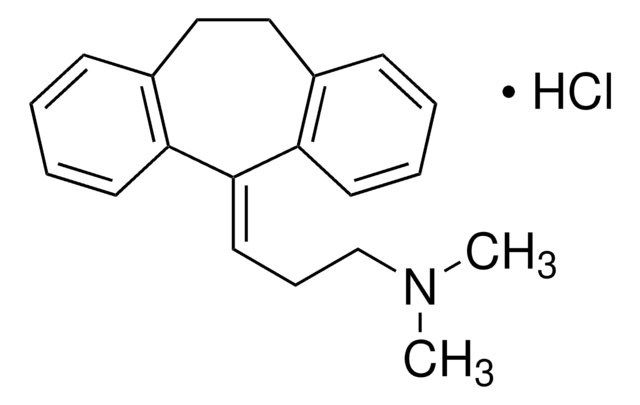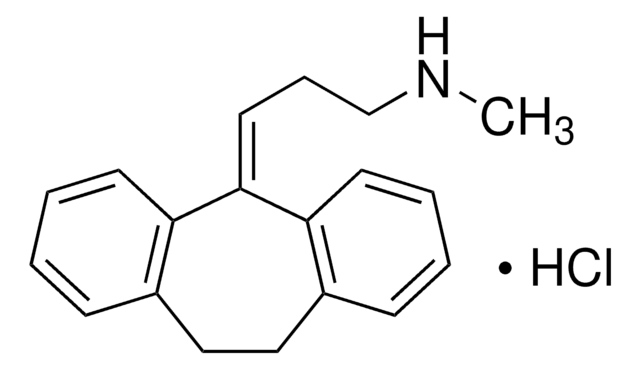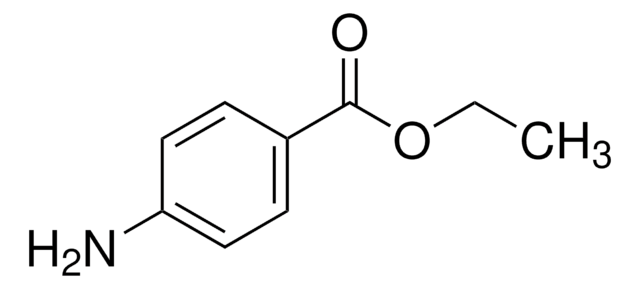1029002
USP
Amitriptyline hydrochloride
United States Pharmacopeia (USP) Reference Standard
About This Item
Prodotti consigliati
Grado
pharmaceutical primary standard
Famiglia di API
amitriptyline
Produttore/marchio commerciale
USP
applicazioni
pharmaceutical (small molecule)
Formato
neat
Stringa SMILE
Cl[H].CN(C)CC\C=C1\c2ccccc2CCc3ccccc13
InChI
1S/C20H23N.ClH/c1-21(2)15-7-12-20-18-10-5-3-8-16(18)13-14-17-9-4-6-11-19(17)20;/h3-6,8-12H,7,13-15H2,1-2H3;1H
KFYRPLNVJVHZGT-UHFFFAOYSA-N
Informazioni sul gene
human ... SLC6A2(6530) , SLC6A4(6532)
Cerchi prodotti simili? Visita Guida al confronto tra prodotti
Descrizione generale
Applicazioni
- Amitriptyline Hydrochloride Tablets
- Chlordiazepoxide and Amitriptyline Hydrochloride Tablets
- Cyclobenzaprine Hydrochloride Extended-Release Capsules
- Perphenazine and Amitriptyline Hydrochloride Tablets
Azioni biochim/fisiol
Risultati analitici
Altre note
Prodotti correlati
Avvertenze
Danger
Indicazioni di pericolo
Consigli di prudenza
Classi di pericolo
Acute Tox. 3 Oral - Aquatic Acute 1 - Aquatic Chronic 1 - Eye Irrit. 2 - Repr. 2
Codice della classe di stoccaggio
6.1C - Combustible acute toxic Cat.3 / toxic compounds or compounds which causing chronic effects
Classe di pericolosità dell'acqua (WGK)
WGK 3
Punto d’infiammabilità (°F)
Not applicable
Punto d’infiammabilità (°C)
Not applicable
Certificati d'analisi (COA)
Cerca il Certificati d'analisi (COA) digitando il numero di lotto/batch corrispondente. I numeri di lotto o di batch sono stampati sull'etichetta dei prodotti dopo la parola ‘Lotto’ o ‘Batch’.
Possiedi già questo prodotto?
I documenti relativi ai prodotti acquistati recentemente sono disponibili nell’Archivio dei documenti.
Il team dei nostri ricercatori vanta grande esperienza in tutte le aree della ricerca quali Life Science, scienza dei materiali, sintesi chimica, cromatografia, discipline analitiche, ecc..
Contatta l'Assistenza Tecnica.






